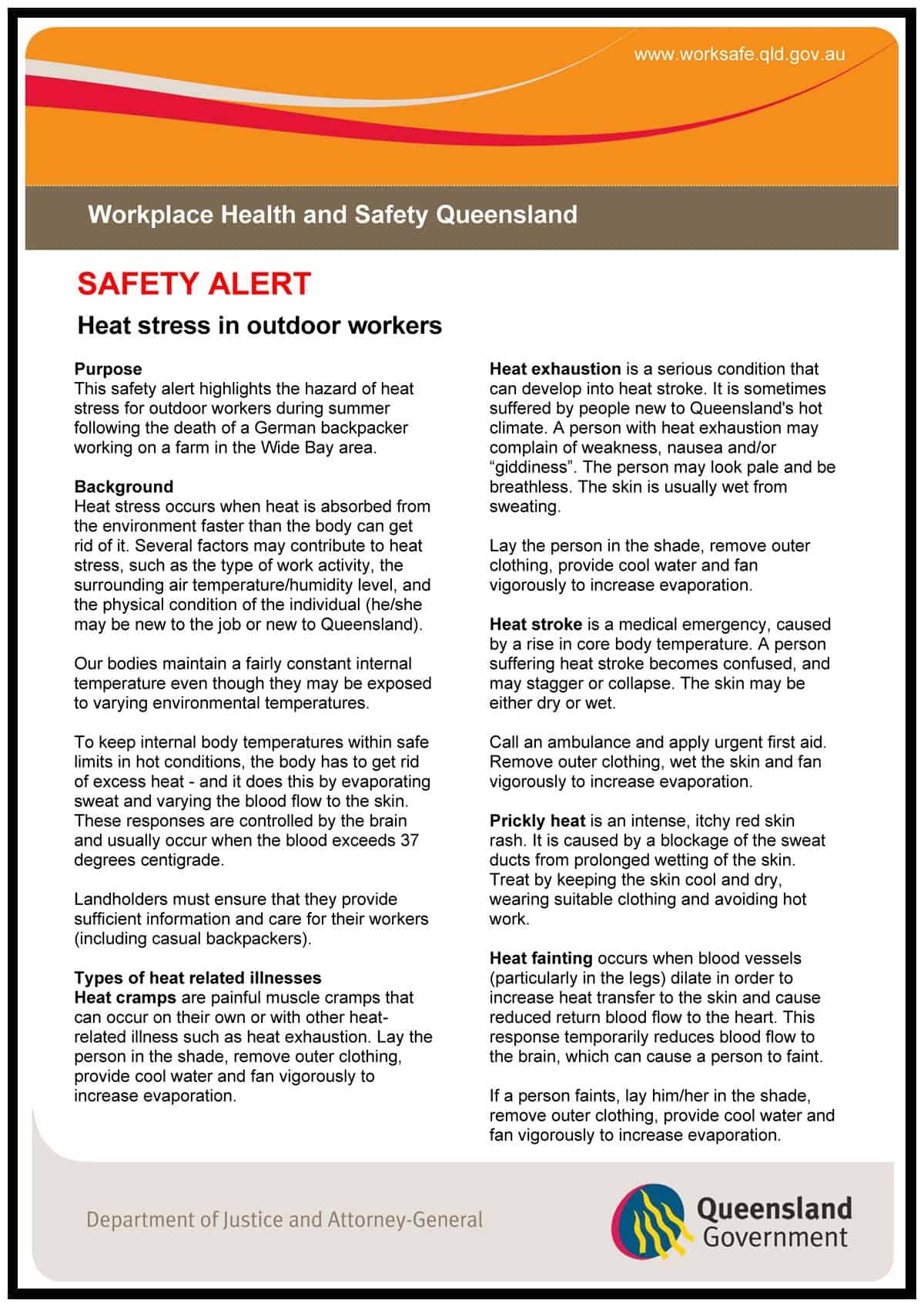For those in the Northern Hemisphere at the moment, the risk of heat stress for workers is an extremely low priority but in Australia, even in the cooler parts and suburbia, the Summer temperatures are tipped to reach 38 degrees Celsius (100 degrees Fahrenheit) over the next few weeks. Away from the urban and coastal centres, temperatures of 45 degrees C and higher will be common.
 The Queensland Government’s OHS regulator has released new guidance on heat stress. As it was only released on January 5 2010, it is the most current information. The guidance seems aimed at rural workers and particularly those industries which may have a transitory labour force from cooler climates.
The Queensland Government’s OHS regulator has released new guidance on heat stress. As it was only released on January 5 2010, it is the most current information. The guidance seems aimed at rural workers and particularly those industries which may have a transitory labour force from cooler climates.
The guidance is useful in that it recommends some engineering solutions instead of just PPE. For instance,
- “creating some shade structure (tarp, umbrella) or at least find a tree for outdoor workers’ rest breaks
- automating or mechanising tasks that require heavy or physical activity
- reducing radiant heat emissions from hot surfaces and plant e.g. by insulation and shielding.”
Although it would have been good to see some mention of reassessing the need to work in heat at all as discussed elsewhere in SafetyAtWorkBlog.
The Queensland guidance recommends the following heat stress control measures:
- “use sun protection – hat, sunscreen and light sun-protective clothing
- drink at least one litre of cool water an hour when working in the sun
- take breaks during the day in cool shaded areas to enable a rapid return of core temperature to normal
- acclimatise to outdoor work gradually
- have eaten during the day to ensure their energy and salt levels are maintained.
- avoid alcohol, caffeine and drugs which can increase urine output and therefore fluid loss.”

It might surprise people to know that while you would expect workers in outdoor environments to be most vocal about temperature – it is from the office worker cosy in their four walls away from the elements that we hear the loudest complaints. It could be to do with the fact more attention is given (quite rightly) to advising outdoor workers about safety precautions. It may be that outdoor workers are expected and in turn expect themselves to be subjected to extremes from time to time. An addition employers invest in protective clothing and the better ones ensure it is worn. All we know is that a recent article we wrote on office temperatures was one of the most popular ever. If you are involved in your own war of the thermastat and want to read the full article it is here http://safetyconcepts.com.au/478/top-ten-facts-about-office-temperature/
Joanne
You’re right about office temperatures. Over my working life I have seen office temperatures be the source of some of the most heated (sorry) arguments and disputes.
Outdoor workers can be more accommodating because they work in a variable environment, office workers are not.
It may be useful for you to look at a recent Australian report – National Hazard Exposure Worker Surveillance Report: Exposure to Direct Sunlight and the Provision of Sun Exposure Controls in Australian Workplaces